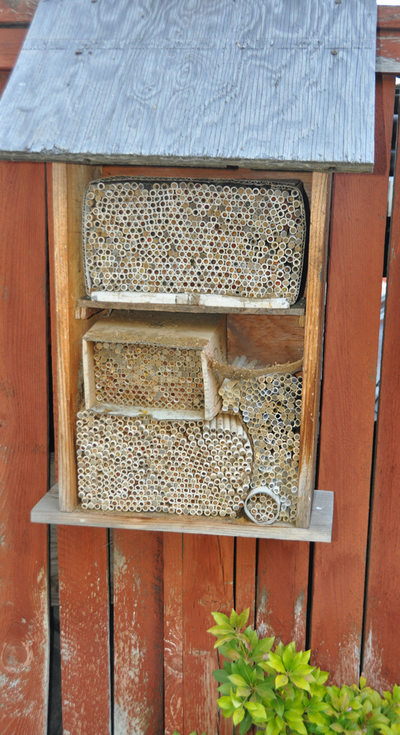Gardening: Order supplies now if you’re planning to start a mason bee hive

As I write this, 7 inches of snow are coming down. The hubby has cleared the walk and stairs enough to refill the birdfeeder, but we’ll wait until the morning to clear our 400-foot driveway. At least this go-round the snow is light, fluffy and easy to move. So, it’s back to planning and preparing for spring. So here are a few more things you can do indoors.
If you are considering putting in a mason bee hive, now is the time to get your bee starter kits ordered and plan where you will put them. They need a south-facing wall that gets morning sun and a little shade in the afternoon. The house and the bee cocoons or straws need to be in place by mid-March as the male bees will start coming out near the end of the month. The females come out about two weeks later when the fruit trees start blooming. You can buy bee houses online or build your own out of scrap lumber. The house needs to be about 10 inches deep with a roof and one side open to the south. My favorite places to order bees and supplies are Knox Cellars (www.knoxcellarsmasonbees.com) or Crown Bees (crownbees.com) both on the state’s west side.
With all the playoff games coming up, now’s a good time to sharpen your tools while you listen to the game. Sharp tools will make many garden chores much easier. Any tool with an edge could use a few swipes with a file. Scrape off caked dirt and remove any rust with sandpaper before wiping the tool head down with mineral oil to keep the rust at bay. Rub wooden handles with sandpaper to remove rough spots and then wipe them down with linseed oil. Pruners and other cutting tools can be put in a vice and sharpened with a small whetstone. Be careful you don’t cut yourself in the process.
It’s time to think about seed starting schedules if you are growing your own vegetable and flower plants. In my experience, plants that go into the garden in mid-April should be started in mid-February. These would include frost-hardy onions, cabbage, broccoli and Swiss chard. Peppers should also be started in mid-February because they often take longer to germinate, especially the popular hot varieties. Other plants like tomatoes, eggplant, cabbage, lettuce and broccoli can be started around mid-March for planting in mid-May. At its simplest, seed starting can be done in a 65- to 70-degree space with a couple of 4-foot LED shop lights suspended within a couple of inches over your plant trays and set on a timer for 14 hours of light a day.
If you have fruit trees, most pruning should be done in late March after the danger of serious cold has passed. After pruning, apply dormant spray to smother overwintering bugs that hide in the bark cracks. If you have peach trees, mid-March is the only time you can apply fungicides to prevent peach leaf curl.